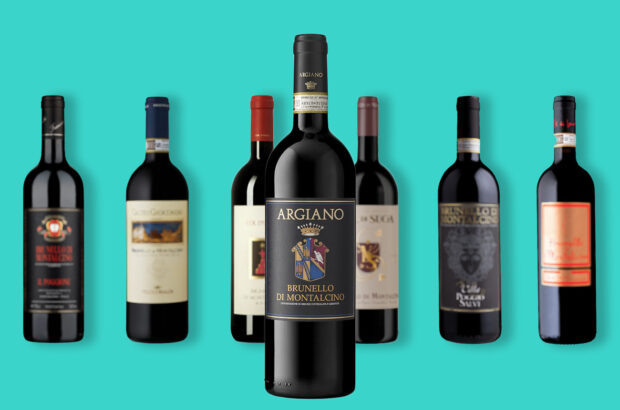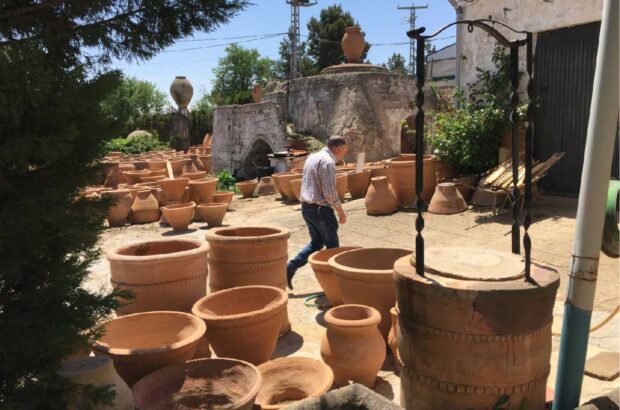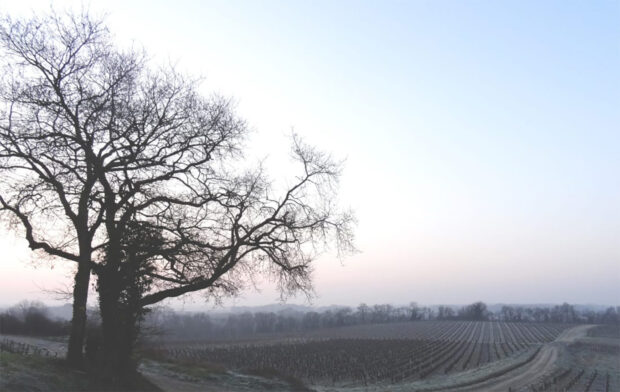We headed south out of Mendoza city towards the foothills of the Andes. After two hours of hard driving, along dusty untarmaced roads, past unkempt vineyards, in barren scrub landscape, it seemed we were heading into remote, unchartered territory. Suddenly, the car stopped beside huge ornate gates and we glimpsed one of the most impressive sights in the wine world. As far as the eye could see stretched acres of newly planted, guyot-trained vines. Beneath a dramatic panoramic Andean backdrop, a vast winery had mushroomed. This was Bodegas Salentein’s new $18 million (£12.5m) Tupungato investment: the face of new Argentina wines. All along Argentina’s 210,000 hectares (ha) of vineyards – from the remote northern Salta region to southerly Rio Negro in Patagonia – the same pattern repeats itself. While the majority of Argentina’s 1,219 wineries are content to pump volumes of overcropped sweet Criolla on to the home market, interspersed among them is a core of 30 wineries focusing on quality – the rising stars of Argentina’s modern industry.
‘Weather and investments are our only restrictions; we have abundant land,’ says Catena’s Patricio Santos. El Niño storms caused havoc in 1998, dashing Argentina’s chances of blazing onto the international scene, and rampant inflation in Argentina’s economy gave Chile a headstart in attracting investment, but now more than £100 million has poured into Argentina from Holland (Salentein), France (Etchart, Domaine Vistalba, Lurton), Portugal (Flichman), Austria (Norton) and even Chile (Viña Patagonia), with investors attracted by cheap land. Criolla is being grubbed up and hastily replaced by Malbec, Chardonnay and Cabernet Sauvignon. A new emphasis on cloning, matching terroir to grape, controlling irrigation (using drip rather than flood) and understanding physiological grape ripeness has lifted quality. New areas are starting to bear fruit. ‘In terms of future potential, my money is on high-altitude Calchaquies in Salta; West Tupungato, High Medrano, El Cepillo and Vistaflores South in Mendoza; and Alta Rio Negro,’ says Catena’s vineyard director, Pedro Marchevsky.
The climatic advantage here is undisputed. ‘We have low humidity, high sun radiation, long sunny days and big temperature amplitude between day and night,’ says Marchevsky. These factors make it perfect for steady development of sugar, acid and flavour to produce full-bodied sweet fleshy reds, but whites are still disappointing. Torrential spring hail can devastate harvests, but well-funded wineries in Mendoza’s Luján de Cuyo, Maipú and East Mendoza use huge hail nets. In the wineries, it’s all change. Out goes the oxidised old style, in come new barrels, upgraded equipment and a brigade of international consultants. Men such as Alberto Antonin (Finca El Retiro, Anubis, Villa Atuel), Michel Rolland (Trapiche), Peter Bright (Peñaflor) and Paul Hobbs (San Telmo) are changing attitudes and confidence. ‘You can’t change the growing and winemaking mentality overnight, but we can show technical adjustments improve
quality,’ says Santos. Argentina also benefits from a uniquely diverse range of cultures. ‘Italian, Spanish, Portuguese and French immigrants swarmed here in the 19th century and are the backbone of the modern industry,’ says José Zuccardi of La Agricola. Imported vines – Bonarda and Barbera from Italy, Torrontés and Tempranillo from Spain – alongside the current star attractions, Malbec and Cabernet, add to Argentina’s charm. Last year was a difficult late vintage, but some regions produced Argentina’s best reds to date. Merlot from Tupungato, Malbec in La Consulta and Lunlunta, Bonarda from Mirador and Cabernet from Agrelo all look very promising, with great colour, depth and ripe tannins. The undoubted stars, tasted in barrel, were Catena’s Alta range.
Five Argentine grape varieties to know
Nicolas Catena
Nicolas Catena has set the pace of change in modern Argentinian wine. This 60-year old agronomist, whose family emigrated from Le Marche in 1902, got his impetus for change after visiting California in 1982 during a professorship at Berkeley University. On his return, he instigated research to find Mendoza’s best areas for Chardonnay, Cabernet and Malbec, and started controlled drip irrigation to reduce overcropping. With his consultant, Paul Hobbs, Catena also tailored vinification techniques (punching down Malbec, pumping over Cabernet) to retain fruit. The result was a huge leap in quality. Added to this, Catena’s clonal programme (narrowing Malbec clones from 150 to 10) and new canopy techniques proved beneficial. ‘We began to understand the importance of correct picking times,’ adds Marchevsky. ‘We also learnt that ripe seeds and ripe soft tannins are crucial for our long macerations, to get maximum flavour and aroma.’ Today Catena’s prime 79ha Angelica vineyard in Lunlunta (at 860m) produces Argentina’s lushest, most powerful Malbec Alta from 60-year old vines on clay soils with rocky sub-soil. Further south in Agrelo, at higher altitude (940m), Catena’s top Cabernets are grown at Tikal vineyard, where the prolonged season retains acidity, producing scented and structured Cabernet Alta. The Alta Chardonnay is planted in higher-altitude Tupungato at 1,200m; nights in Tupungato are very cool, with larger temperature amplitude than lower Luján de Cuyo and Maipú. The Alta range are super-premiums (none made in 1998), while Catena, Alamos Ridge and Argento are its highly consistent, reliable volume brands.
The new Zapata winery in Agrelo, inspired by Mayan-pyramid design, is a symbol of Catena’s status and progress – along with the Esmeralda and Escorihuela wineries. The Chardonnay and Pinot Noir plantings planned for 2002 in Rio Negro will be watched with interest, as will Catena’s joint venture with the Rutini family at Bodega La Rural – the first winery to plant vines in Tupungato in the 1920s.
Bodegas Salentein
Tupungato, southwest of Mendoza in Uco valley, is home to Argentina’s largest and most ambitious wine project to date. With 2.5 million-litre tanks, 10,000 bottle capacity and $6 million (£4.1m) vineyard investment in prime land funded by Dutch investors, San Salentein’s vast $12 million (£8.3m) winery has the highly experienced Carlos Pulenta at the helm. ‘We believed that Tupungato’s unique
microclimate had the potential for full-scale investment,’ says Pulenta. ‘We will also source from older Vistalba and Agrelo vineyards for Malbec and Cabernet.’ The 256ha planted to date (at altitudes ranging from 1,000m to 1,500m) include Merlot, Pinot Noir, Chardonnay and Cabernet Sauvignon, as well as Sauvignon Blanc, Malbec and Syrah. The first releases (in 1999) show promise. It is five years since Salentein bought 2,000ha across three fincas – El Portillo, La Pampa and San Pablo – with 950ha potential vineyard land, but as others have been attracted to the area, prices here have since escalated from $500 to $3,000 per hectare.
La Agricola
La Agricola, in East Mendoza, is one of Argentina’s most dynamic wineries and in Santa Julia and Q it has sound commercial ranges. The company is still family-owned (many others sold out in the late 1980s) by president José Zuccardi,who first planted vines in 1963. While other wineries switch to high-density guyot-trellising, Zuccardi believes hot East Mendoza is suited to traditional parral (pergola), allowing cluster aeration and full flavour development.
Inspired by Italian ancestry, Zuccardi focuses on Sangiovese and Bonarda in Maipú and Santa Rosa. He also experiments with Zinfandel, Syrah and Viognier, but his greatest success to date, surprisingly, has been with Tempranillo.
Anubis
Susanna Balbo is one of Argentina’s most dynamic winemakers. With an impressive track record (Michel Torino and Martins), she made her first Anubis varietals in 1999. Balbo sources from diverse vineyards (Malbec from La Consulta and Luján de Cuyo; Bonarda from Rivadavia), some of which are owned by her husband, the talented viticulturist Pedro Marchevsky. She plans to build her own winery within the next few years. Assisted by consultant Alberto Antonin (ex-Antinori), Balbo’s Anubis Bonarda and Malbec 2000 are superb. ‘We picked late. It was nerve-racking but worth it to get ripe tannins. We used increased must bleeding to get concentration,’ says Balbo. Her modern fruit-driven style is also evident in Villa Atuel’s elegant Syrah and Merlot from southerly San Rafael, where she consults.
Finca el Retiro
Alberto Antonin also consults at the Tittarelli family’s old-established winery, Finca el Retiro, located in warm East Rivadavia (Mendoza). With Tittarelli’s winemaker, Graciela Reta, Antonin has produced superb Sangiovese and Bonarda in 2000. Their depth of colour and ripe fruit character are the result of scrupulous selection and restricted yields. El Retiro has some of the most exciting, affordable reds of 2000.
Domaine Vistalba
French-owned Domaine Vistalba, run by Bordelais Hervé Fabre, is in Mendoza’s old vine heartland, Luján de Cuyo. His Malbec and Cabernet, made from 50-year old vines, have an Old World elegance and structure, contrasting with modern, fruit-driven styles. Vistalba’s new venture in Alta Rio Negro, south in Patagonia, is one to watch. This cool region – also home to Argentina’s apple orchards – has largely supplied sparkling wine grapes, now being eyed by fine wine investors. It is early days – the new Infinitus blends could benefit from vine maturity – but the Semillon, Sauvignon Blanc, Merlot, Malbec and Cabernet show potential.
Davalos
Argentina’s highest commercial vineyard (2,365m) at Molinos is six hours from Cafayate in remote, wild Salta. Raul Davalos, a small, eccentric producer, makes the country’s most exciting Malbec-Cabernet blend, from 100-year-old vines at his nine-hectare Colomé vineyard. A dedicated terroirist, Davalos’ minimal handling produces natural fruit character. Sadly water is limited here, so expansion is unlikely. But just 100km away, Michel Rolland’s joint venture with Arnaldo Etchart at San Pedro de Yacochuya looks promising. Salta is a region to watch.
Other producers to note
Norton (Mendoza), Finca Flichman (East Mendoza), Valentin Bianchi (San Rafael, South Mendoza), Villa Atuel (San Rafael), Etchart (Salta), Humberto Canale (Rio Negro), Nieto y Senetiner (Mendoza), Alta Vista (Mendoza), Michel Torino (Salta), Trapiche (Mendoza), Weinert (Mendoza).
Whites
CATENA AGRELO CHARDONNAY 1999 Approachable, affordable Chardonnay (Alta Chardonnay is £23) with rich creamy depth from long lees contact and oak maturation. £8.99; Bib, Odd, Maj
Reds
ANUBIS BONARDA 2000 Supple, fruit-driven Bonarda packed with mulberry fruit and ripe tannins from low-yielding vines. £6.50; WSo
FINCA EL RETIRO BONARDA 2000 Fabulous colour, supple tannins, dense blackcherry fruit in Retiro’s new release. £5.99; Lib
FABRE MONTMAYOU MALBEC 1997 Structured, complex Malbec with rich black fruit. £6.99; Odd
Q TEMPRANILLO 1998 This has little resemblance to Rioja – with riper, richer flavours. £7.99; Tes
CATENA MALBEC 1997 Deep blackcurrant fruit, smokey undertones. £9.99; Bib, Odd
CATENA CABERNET SAUVIGNON 1997 Fabulous cassis richness – Argentina’s best-priced Cabernet. £8.99; Maj, Sai, Tes
VALENTIN BIANCHI CABERNET SAUVIGNON 1997 Elegant spice and cigar box aromas with rich blackcurrant fruits. £8.99; Odd
COLOME RED DAVALOS 1998 Wild black fruit cassis aromas; dense sweet black fruit palate. £15.99; Odd, Adn, Pps
CATENA ALTA MALBEC 1997 Dark, brooding, powerful top class Malbec with a year’s maturation in French oak. £23; Bib












